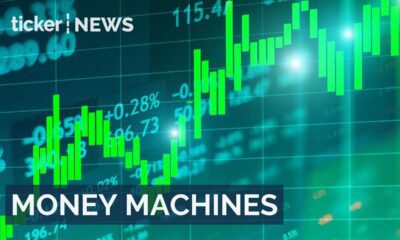Money
Experts unveil key investment strategies for 2025
Dr. Steve Enticott advises young professionals to diversify investments and start early for smarter investing in unpredictable markets.

Money
Stocks rally ahead of Thanksgiving as markets log four days of gains
Markets gain momentum ahead of Thanksgiving, with the Dow up 388 points and Oracle rising 4% amid investor optimism.
Money
Dow surges 500 points amid rate cut optimism
Dow jumps 569 points on fresh hopes for December rate cut and AI market optimism
Money
Gold prices surge as Central Banks buy big, but risks grow ahead
Gold prices surge as central banks increase demand; risks include a stronger dollar and rising interest rates.
-



 News4 days ago
News4 days agoWarner rejects Paramount’s hostile takeover bid
-



 Shows4 days ago
Shows4 days agoJames Bozinovski: Reshaping retail with innovative strategies
-



 News3 days ago
News3 days agoAI stocks surge amid market shifts and spending warnings
-



 Ticker Views4 days ago
Ticker Views4 days agoAustralia is reeling from the worst terrorist attack on home soil. Could it have been prevented?
-



 News5 days ago
News5 days agoSupreme Court upholds TikTok ban: Free speech at risk?
-



 News3 days ago
News3 days agoAI investments set to surge in 2026 as companies target productivity gains
-



 News4 days ago
News4 days agoNSW weighs urgent gun law changes after Bondi shooting as firearm caps spark backlash
-



 News4 days ago
News4 days agoExperts warn AI could trigger ‘Grey Swan’ events in the global economy








